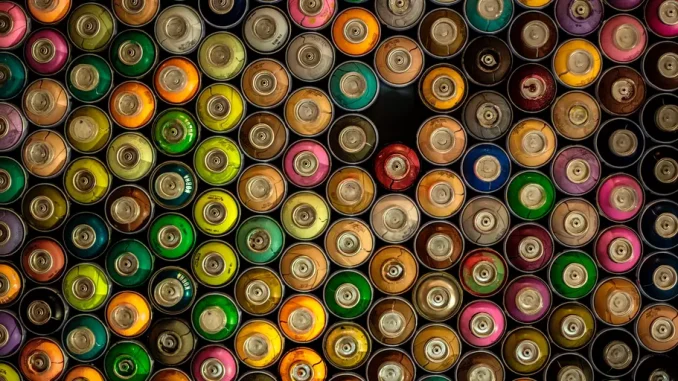
In recent years the fashion industry has started to grapple with the environmental impact of its business model, including the huge amounts of textile waste going into landfills. Below we’ll talk about the concept of circular fashion as a well-meaning improvement over fast fashion. However, circular fashion is not a silver bullet for textile waste because of microplastic pollution.
The Problem of Textile Waste and Clothing in Landfills
The fashion industry is every environmentalist’s favorite bad guy. Fast fashion is basically the idea that clothing is cheap, disposable, and shopping is some kind of mandatory hobby to keep you “in style.”
Thanks to effective marketing and antiquated gender norms (mostly focused on women), people feel social pressure to avoid wearing the same clothes twice or too often. This helps the fashion industry drive more sales as consumers get super cheap clothing that must be refreshed each season based on the whims of marketing executives. Unfortunately, the model relies on exploiting and endangering laborers, plus ignoring negative environmental impacts.
But wait, what do I do with last year’s newly unfashionable wardrobe? Based on EPA estimates, the overwhelming majority of textile waste goes into landfills.
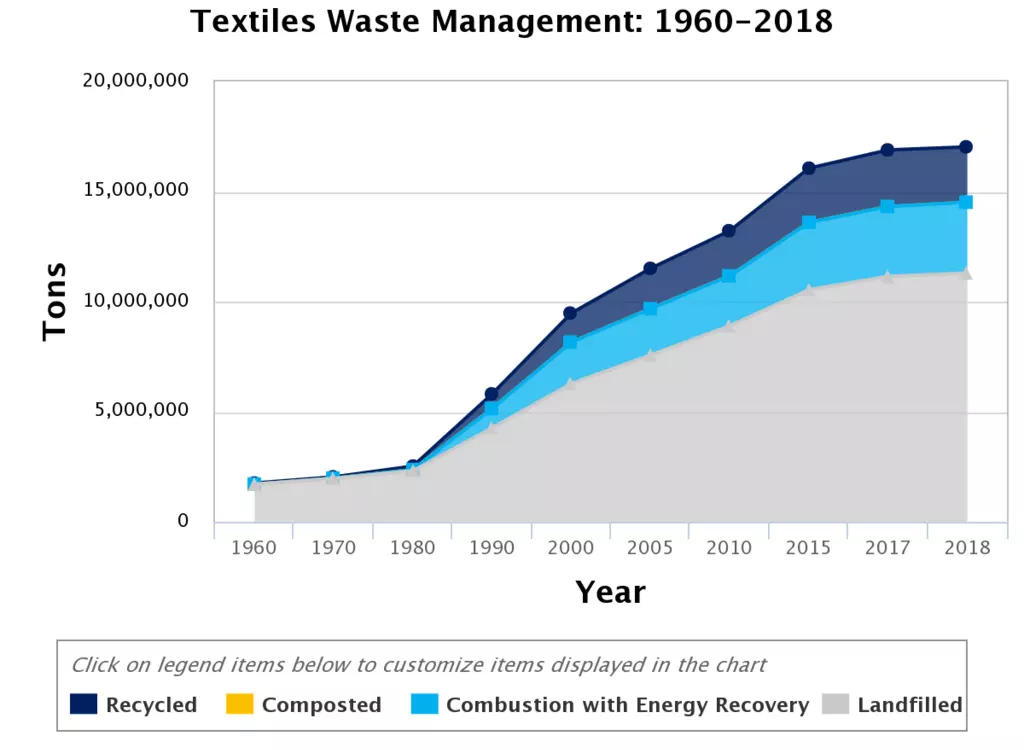
Textiles represents almost 6% of U.S. waste. Six percent you say? Maybe that doesn’t seem like much.
Well, think about it like this. The EPA estimates the U.S. created 17 million tons of textile waste in 2018. If you take the weight of my Vejas – 23 ounces – this would equate to roughly 24 billion pairs getting buried or burned a year!
Will Circular Fashion End Textile Waste?
Circular fashion looks to keep clothing and materials in use through recycling, repurposing and second-hand donations or sale. The idea is to avoid making completely ‘new’ products and reducing the amount of harmful waste.
In recent years, many responsible clothing lines have focused heavily on using recycled materials in their clothing. In fact, in some stores, it is difficult to find clothing that doesn’t have some recycled fabric, such as recycled polyester, in it.
The fashion industry has turned to recycled materials, especially plastic, to create all types of new products made of recycled materials: leggings, sneakers, and outerwear.
[Cut through the hype of companies claiming to make eco-friendly shoes, we reviewed the top shoe brands using recycled materials in their sneakers, casual flats, and dress shoes].
The U.S. recycled only about 9% of all plastic made in 2018. Society definitely needs a way to reuse all this plastic waste. The rest was either combusted to produce energy or, most often, simply buried in a landfill. (Read our deep dive on the truth about recycling here)
However, there is a villain in this story (queue scary, dramatic music) – microplastics!
Where Do Microplastics Come From?
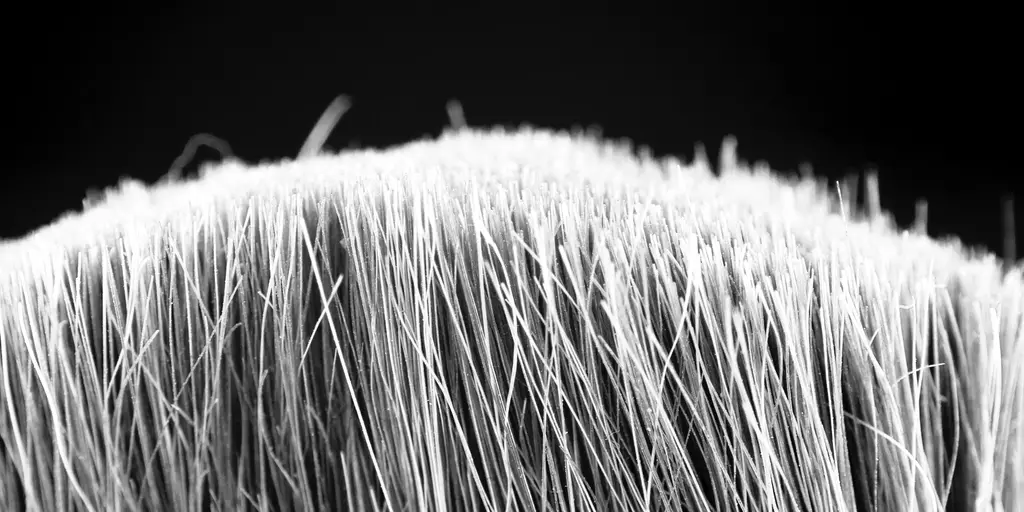
When humans develop technological solutions to our problems, we often create unintended consequences. Using recycled plastic in clothing is an example of this phenomenon.
Creating clothes and other products from recycled plastic sounds like an incredible and sustainable solution to the 8.3 billion tons of plastic produced since the 1950s. Unfortunately, there are drawbacks to using recycling plastic in fabrics which can cause unintended damage to the environment.
When companies use recycled plastics in materials like textiles, they can shed a harmful byproduct called microplastics into the natural environment.
Microplastics are, simply, pieces of plastic that are less than 5 mm in diameter, or about the size of a sesame seed and often much smaller, potentially microscopic.
In the past, humans introduced microplastics into the environment indirectly. Namely from larger plastic waste degrading over time.
Also, some companies started selling pernicious products that introduce microplastics by design. Remember that facewash with exfoliating plastic beads? Who thought that was a good idea?!
In recent years studies have shown that when consumers wash textiles made of recycled material, the clothing sheds microscopic fibers. These fibers can easily pass through water filtration systems and end up in waterways and, ultimately, the ocean.
The International Union for Conservation of Nature estimated in 2017 that 35% of microplastics came from shedding of synthetic materials during washing.
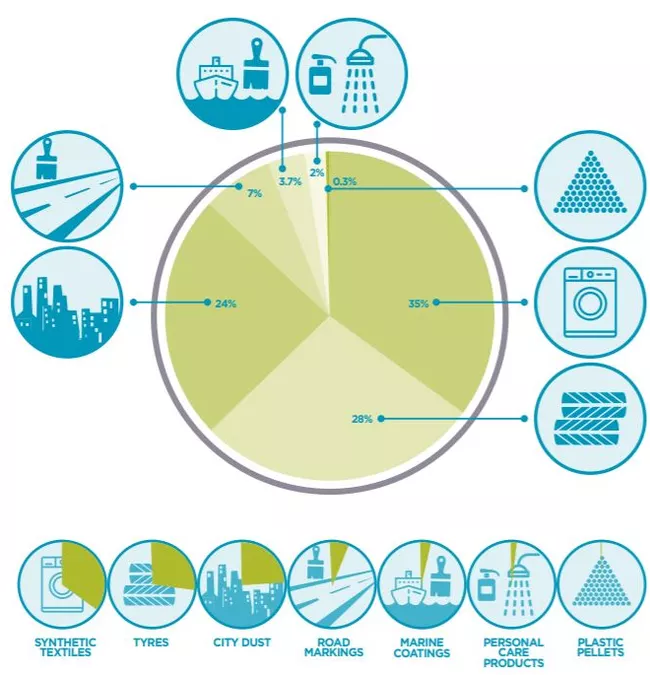
Microplastics Disrupt Natural Systems, Including You!
Microplastics literally cover the globe. According to Nature, scientists have found microplastics everywhere they have looked on Earth. They are almost certain that every species on the planet has been exposed to them.
Oceanographers estimate there are somewhere between 15 trillion and 51 trillion pieces of microplastic floating in surface water worldwide. Most of these plastics will never truly disappear; they will only degrade into smaller and smaller pieces.
Microplastics are especially harmful because they can be easily mistaken for food by animals. Scientists have found sea birds, turtles, and other animals with their bellies full of bits of plastic. Humans are also exposed to alarming amounts of microplastics, which can accumulate in our organs and disrupt our endocrine systems.
Microplastics as a New Type of Textile Waste
Many companies, though, are advertising new textiles that utilize recycled plastic materials. But as mentioned above, about a third of microplastic pollution comes from simply washing our clothes.
When you put clothes containing plastic-based fibers (think nylon, synthetic fleece, acrylic yarn) in the washing machine, the water and tumbling motion sets loose tiny plastic fibers that easily enter the wastewater system.
This water carrying the textile microplastics eventually ends up in the ocean.
There are options if you want to purchase shoes and clothing made with recycled plastic. A good option is to use bags that catch microplastics. The Guppy Friend cites scientific evidence (see the testing FAQ) saying their product will significantly reduce microplastic shedding.
Many shoes use recycled plastic material. But as the wearer of these recycled sneakers walk around, they can eventually begin to shed tiny plastic shreds of microplastic or other synthetic materials.
All the wear and tear you notice on your shoes indicates a gradual release of these shreds. If you wear shoes that don’t use natural material on the bottom (or outsole), it can contribute to the microplastic pollution.
Also, shoes are commonly made of many different types of plastics and other materials. This mix of materials make shoes extremely difficult, or even impossible, to recycle at all. If you find yourself with some sneakers made of recycled plastic, you can likely assume that this will be their final form before the landfill.
Are There Real Solutions to Fast Fashion Waste?
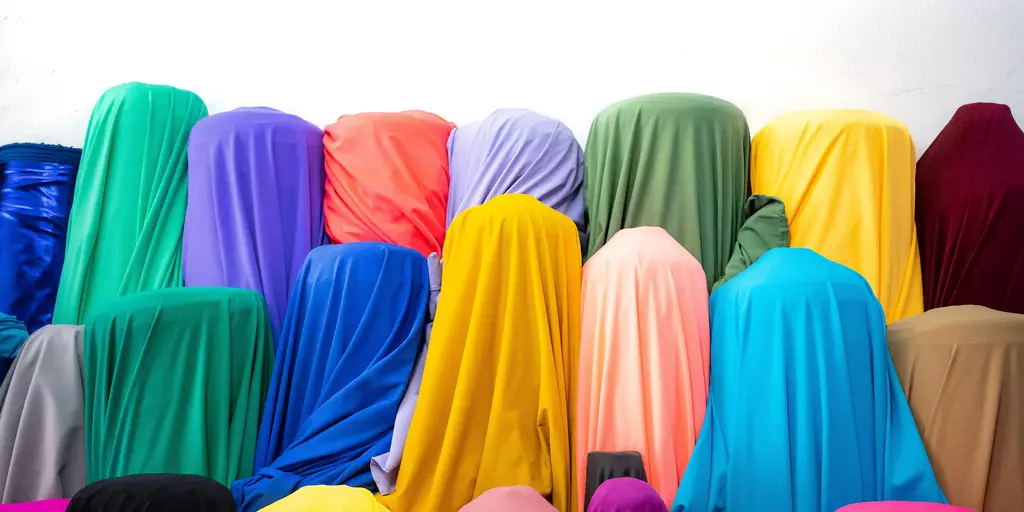
Short answer: no. However, there are ways to mitigate the side effects of microplastics.
One work-around to this problem would be to pick textile items that don’t need to be washed as often or at all. Backpacks or overcoats made from recycled plastics are not stuffed in the washing machine as often as socks are, for example.
Some of the best solutions to this incredibly complex problem are theoretically quite simple: buy less, recycle as best as you can, and support circular business models. Our review of top brands using recycled materials includes Thousand Fell, a company that uses recycled materials in their shoes and takes back old pairs at the end of their useful life for proper disposal.
Consumers can effectively communicate with producers by simply consuming less. Try to wear the clothes and use the products you already have, repair them when necessary, and make informed choices about how you buy future items.
Don’t Stop Recycling or Buying Recycled
Don’t stop recycling just because it isn’t 100% effective. Using recycled material still saves on greenhouse gasses when compared to virgin materials hopeless.
Humans have introduced so much plastic into the world, we need to figure out what to do with it. But durable goods are probably a better route for all of our unrecycled plastic. Here at Recycled & Renewed we have found countless high-quality products that use recycled materials, most of which will shed limited to no microplastics (rain barrels, compost bins, and numerous companies focused on using recycled materials).
One innovative use for recycled plastic we’ve found (unrelated to textiles) is a plastic brick invention by Nzambi Matee. She combines plastics with sand, then heats the mixture and presses it into bricks in her factory in Nairobi, Kenya. Every step can help as we dig our way out of our global plastic problem.
Circular Fashion Does Not Save Consumerism
We must continue to advocate for plastic alternatives and for safer and more effective recycling processes to truly deal with all of our plastic waste. Unfortunately, turning all of our water bottles into underwear, shoes, and socks is probably not the silver bullet consumers of the world are looking for.
Our suggestion is to look for recycled products but be wary of filling your closet with recycled fabrics made from plastic in the misguided belief that it is somehow saving the planet.
This post has affiliate links. We try to indicate which products we’ve owned and tested ourselves. If you end up making a purchase through one of our affiliate links, we may earn a very small commission that offsets the cost of hosting, building, and maintaining this site.